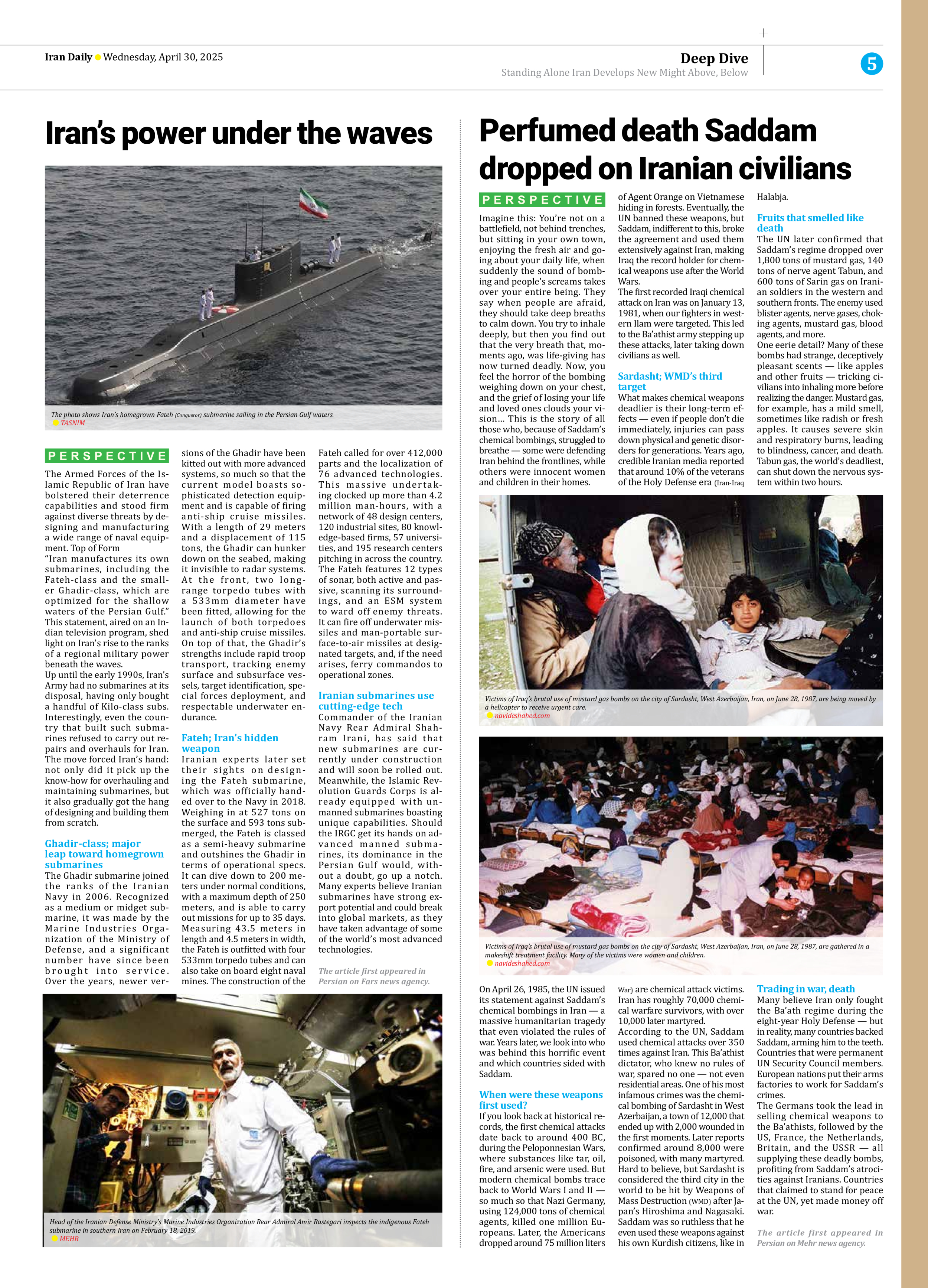
Perfumed death Saddam dropped on Iranian civilians
Imagine this: You’re not on a battlefield, not behind trenches, but sitting in your own town, enjoying the fresh air and going about your daily life, when suddenly the sound of bombing and people’s screams takes over your entire being. They say when people are afraid, they should take deep breaths to calm down. You try to inhale deeply, but then you find out that the very breath that, moments ago, was life-giving has now turned deadly. Now, you feel the horror of the bombing weighing down on your chest, and the grief of losing your life and loved ones clouds your vision… This is the story of all those who, because of Saddam’s chemical bombings, struggled to breathe — some were defending Iran behind the frontlines, while others were innocent women and children in their homes.
On April 26, 1985, the UN issued its statement against Saddam’s chemical bombings in Iran — a massive humanitarian tragedy that even violated the rules of war. Years later, we look into who was behind this horrific event and which countries sided with Saddam.
When were these weapons first used?
If you look back at historical records, the first chemical attacks date back to around 400 BC, during the Peloponnesian Wars, where substances like tar, oil, fire, and arsenic were used. But modern chemical bombs trace back to World Wars I and II — so much so that Nazi Germany, using 124,000 tons of chemical agents, killed one million Europeans. Later, the Americans dropped around 75 million liters of Agent Orange on Vietnamese hiding in forests. Eventually, the UN banned these weapons, but Saddam, indifferent to this, broke the agreement and used them extensively against Iran, making Iraq the record holder for chemical weapons use after the World Wars.
The first recorded Iraqi chemical attack on Iran was on January 13, 1981, when our fighters in western Ilam were targeted. This led to the Ba’athist army stepping up these attacks, later taking down civilians as well.
Sardasht; WMD’s third target
What makes chemical weapons deadlier is their long-term effects — even if people don’t die immediately, injuries can pass down physical and genetic disorders for generations. Years ago, credible Iranian media reported that around 10% of the veterans of the Holy Defense era (Iran-Iraq War) are chemical attack victims. Iran has roughly 70,000 chemical warfare survivors, with over 10,000 later martyred.
According to the UN, Saddam used chemical attacks over 350 times against Iran. This Ba’athist dictator, who knew no rules of war, spared no one — not even residential areas. One of his most infamous crimes was the chemical bombing of Sardasht in West Azerbaijan, a town of 12,000 that ended up with 2,000 wounded in the first moments. Later reports confirmed around 8,000 were poisoned, with many martyred. Hard to believe, but Sardasht is considered the third city in the world to be hit by Weapons of Mass Destruction (WMD) after Japan’s Hiroshima and Nagasaki. Saddam was so ruthless that he even used these weapons against his own Kurdish citizens, like in Halabja.
Fruits that smelled like death
The UN later confirmed that Saddam’s regime dropped over 1,800 tons of mustard gas, 140 tons of nerve agent Tabun, and 600 tons of Sarin gas on Iranian soldiers in the western and southern fronts. The enemy used blister agents, nerve gases, choking agents, mustard gas, blood agents, and more.
One eerie detail? Many of these bombs had strange, deceptively pleasant scents — like apples and other fruits — tricking civilians into inhaling more before realizing the danger. Mustard gas, for example, has a mild smell, sometimes like radish or fresh apples. It causes severe skin and respiratory burns, leading to blindness, cancer, and death. Tabun gas, the world’s deadliest, can shut down the nervous system within two hours.
Trading in war, death
Many believe Iran only fought the Ba’ath regime during the eight-year Holy Defense — but in reality, many countries backed Saddam, arming him to the teeth. Countries that were permanent UN Security Council members. European nations put their arms factories to work for Saddam’s crimes.
The Germans took the lead in selling chemical weapons to the Ba’athists, followed by the US, France, the Netherlands, Britain, and the USSR — all supplying these deadly bombs, profiting from Saddam’s atrocities against Iranians. Countries that claimed to stand for peace at the UN, yet made money off war.
The article first appeared in
Persian on Mehr news agency.







